Baking and roasting are interchangeable terms in most kitchens, but real chefs know there is a drastic difference between the two. Do you know which is which?
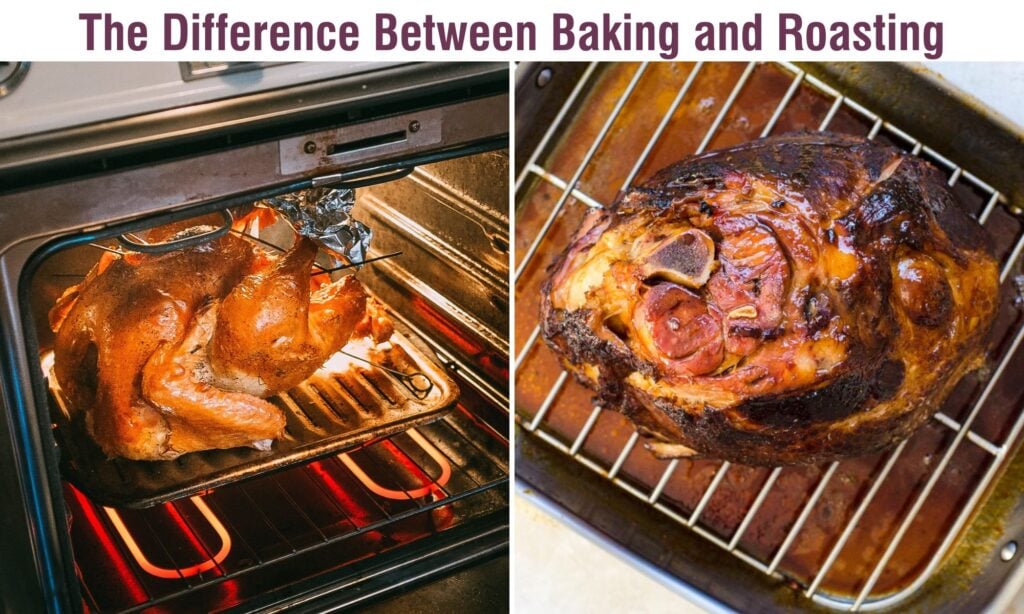
Table Of Contents
- What Is Baking?
- What Is Roasting?
- Baking and Roasting Similarities
- Baking and Roasting Differences
- Does Cooking Temperature Change The Cooking Method?
- What Is The Difference Between Baking and Broiling?
- What Does Barbecuing Count As?
- When Baking Becomes A Moist-Heat Method
- How Do These Buzzwords Affect You?
- FAQ's
- Baking and Roasting Recipes
Baking and roasting are two of the most common cooking methods in a home cook's repertoire. Whether you are baking a cake, roasting a chicken for Sunday supper, or making beautifully roasted carrots for a side dish, being able to utilize an oven and walk away from what you're cooking simplifies meal-making.
However, there is a pretty stark difference between the two cooking methods. Understanding those differences makes it so people will rave about your meal and want to write songs dedicated to its awesomeness.
We'll look at the differences between the two and how to use each to your advantage, then check out some of the best recipes the internet has to offer.
What Is Baking?
Baking is a dry-heat cooking method done by placing your food on or in a surface and cooking it by surrounding it with hot air. This surface can be as simple as a sheet pan or a 9x13" casserole dish.
This surface is an important part of baking because it is part of how the heat is conducted to the food.
Since baking is a general term, more often than not when we think of baking we think of sweets like brown butter shortbread cookies, lucky charms cake, or a sky-high s'mores pie. However, baking goes much further.
With savory foods, baking is for bread, fish, and vegetables, but also for casseroles and appetizers.
What Is Roasting?
Roasting is a dry-heat cooking method done by elevating your food and cooking it surrounded by dry, hot air.
Solid foods, like vegetables and cuts of meat, are best for roasting. For top results, choose cuts of meat that are low in connective tissue. These don't need moisture to break down toughness, meaning that the cuts are naturally more tender.
Beef, when cooked to a rare or medium-rare internal temperature, is juicy and tender on the inside, and crisp on the outside.
For whole cuts of pork, you get a crispy outside and succulent inside when cooked to the new USDA guidelines of medium-rare.
As always, cook any chicken to a well-done temperature of 160°F.
Fun fact! Roasting is most commonly done in an oven, but cooking on a rotisserie or a spit is also roasting.
Baking and Roasting Similarities
- Dry-heat. Both are dry-heat cooking methods, meaning hot, dry air surrounds the food for cooking.
- Appliance. Most commonly, the oven is used for both baking and roasting.
- Uncovered. Both methods require the food to cook uncovered. (See the moist-heat section below for more details on how this changes the cooking method.)
- Ingredients. Both methods favor proteins with low connective tissue because the cooking method does not tenderize while cooking.
- Seasoning. Both taste better when seasoned before cooking.
Baking and Roasting Differences
The results of mixing up these two methods aren't detrimental to your meal coming out well. However, intellectually knowing the difference between the two gives you greater control over your cooking as well as better results.
Some of the differences between baking and roasting are:
- Ingredients. Roasting is best for solid foods like vegetables and cuts of meat, whereas baking often starts loose and becomes solid during baking. (Examples include cheesecake batter or this spinach egg bake.)
- Temperature. Frequently, roasting happens at higher temperatures. However, the temperature you are cooking at does not determine which cooking method you are using. Please, please, please see the section below about this because the internet loves to tell you all the wrong things about this.
- Texture. Roasting gives a crispy exterior all the way around the food by allowing the heat to completely circulate around it. Baking however sits in its own juices meaning that the top and sides may get crispy, but the bottom struggles to without fat, like oil, to help it. A great example of this is with this glazed coca-cola ham. If it sat in the juices the bottom would get soggy.
- Color. Baking doesn't caramelize the food where liquid touches it. For example, this sweet lavender chicken cooks with reserved marinade. As a result, the bottom is a blanched, lusterless color. The only way to give it color back is to flip the chicken and allow it access to the dry heat.
- Drippings for sauces. The fat-to-juice ratio is different with baking and roasting, which can massively affect sauces, gravies, and jus. When baking, food sits in its own juice and drippings so it doesn't get the opportunity to develop the rich and caramelized flavor that roasting does.
Does Cooking Temperature Change The Cooking Method?
No. Nope. Nuh-uh. Not at all.
I seriously can't say this enough. No, it doesn't, despite a ridiculous number of high-ranking articles out there that say it does.
I repeat. The cooking temperature DOES NOT determine the cooking method.
Roasting DOES NOT require high heat, and baking is not exclusively a medium-heat cooking method. You can bake a pizza at 500°F and slow roast a turkey at 250°F.
Dry-heat cooking methods are determined by the type of heat used and how it is conducted. For roasting, this means that the dry heat surrounds the food without any surface touching it to conduct it. For baking, the heat transfers through one surface, with the dry air surrounding the rest.
That's all. And I will fight anyone who says otherwise.
What Is The Difference Between Baking and Broiling?
Some ovens come with a designated broiling drawer, but most broiling is done in the actual oven itself. Therefore, it's easy to confuse how the two methods differ.
In this case, baking uses heat that completely surrounds the food, with heat coming from the bottom and top elements in the oven. Broiling however uses focused heat from above the food, usually as close to the food as possible without burning it.
As a cooking method, broiling isn't used as frequently as baking. However, broiling is great for reheating leftovers. It also can crisp up an ingredient at the end of cooking, like with these bacon-wrapped chicken thighs. Or it can brown and melt cheese like with this garlic toast.
What Does Barbecuing Count As?
Barbecuing as a cooking method is technically roasting.
To barbecue means to use hardwood or hot coals to create dry heat that surrounds the food. Since the food is usually elevated on a rack or grate, the air circulates all around the food.
If your food ends up sitting on a surface like a sheet pan, it would turn into baking, just like in the oven.
When Baking Becomes A Moist-Heat Method
One of the downfalls of home cooking, versus a chef's knowledge is that many recipes use cooking methods interchangeably or as verbs. We bake, steam, and saute food, but aren't actually using the cooking method associated with the verb.
For example, SOOOO MANY recipes tell you to cover a baking dish with aluminum foil or a lid and bake it in the oven. Seems basic enough, right?
It's actually completely wrong.
In fact, once that lid goes on the food, you're not baking or roasting anymore. You're steaming or braising, depending on how much liquid is in the pan. This is also why those same recipes will have you finish cooking uncovered so the top can get crispy - because steamed and braised foods aren't crispy.
Baking and roasting are both dry-heat cooking methods, which means they don't rely on liquid for cooking. They rely instead on the evaporation of moisture. When you cover the dish though, you are trapping that moisture causing the food to steam or braise.
How Do These Buzzwords Affect You?
I'm going to let you in on a secret - restaurants LOVE to use baking and roasting interchangeably on their menus because using certain buzzwords means they can charge you more.
For example, if I sold you roasted vegetables, that sounds more appetizing than baked vegetables, right? Baked vegetables give the mental image of something that is squishy, mushy, and slightly discolored.
But if I tell you they're roasted vegetables, the mental image is something beautifully caramelized and rich with flavor. Therefore, I can charge you an extra $1.50.
The same goes for things that you want to sound healthy. For example, baked almond-crusted chicken tenders. They are cooked on an elevated rack so they can get crispy all the way around, which is technically roasting. However, calling them baked makes them sound healthier.
Here's the catch. Those vegetables are baked on a sheet pan and not elevated for roasting. "Is that really a big deal?", you ask. Go try these garlicky roasted purple potatoes and tell me if it is worth the upcharge. I call them roasted because that's the search term most people use when googling them. However, they are 100% baked.
FAQ's
If the chicken is whole, roast it 100% of the time. This gives you crispy skin all around. If you are cooking the chicken in pieces that don't have a coating, baking is ideal because it will stay moister. If the pieces are dredged or coated in a batter, roast instead.
The cooking method is not actually a factor in the speed at which the food finishes in this case. Since hot, dry air completely surrounds the food, it will cook at the same speed regardless of which method you choose. The only difference is the way the heat is transferred to the food. Read the above sections about how temperature affects the method, and how moist-heat does for a deeper understanding.
Baking and Roasting Recipes
If you want to put your knowledge of baking vs. roasting to practice, I highly recommend trying some of these recipes.
Recipes for Baking
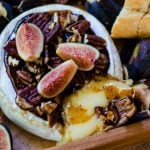
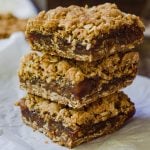

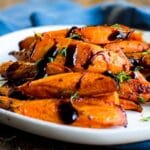
Recipes for Roasting

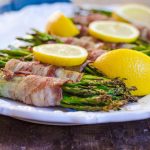
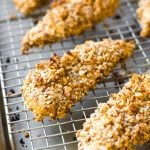
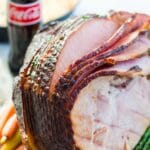


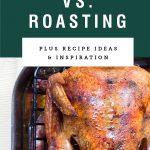
What are your thoughts?